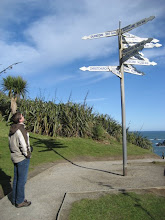Given my enjoyment of speculative fiction, it makes sense to follow a science book with a science fiction book. While I make occasional references to fantasy, most of my speculative fiction reading is science fiction; the books I've read this year include /, The Moon is a Harsh Mistress, and The Diamond Age. (I recommended in their reviews the following science fiction books: Xenocide, Children of the Mind, A Deepness in the Sky, Stranger in a Strange Land, The Number of the Beast, Animal Farm, Brave New World, Fahrenheit 451, The Left Hand of Darkness, Nineteen Eight-Four, and Cryptonomicon).
I didn't follow An Inconvenient Truth with a rereading of Dune, Dune Messiah, and Children of Dune. However, The Universe in a Nutshell discusses such science fiction topics as time travel (albeit concluding with Hawking's Chronology Protection Conjecture). Consequently I followed it with the Greg Egan's novel Quarantine.
The Universe in a Nutshell discusses the uncertainty principle often, including Feynman's multiple histories idea. Stephen Hawking explains the wave function as "a number at each point of space that gives the probability that the particle is to be found at that position." He discusses particle motion as a sum over multiple histories. In addition, he notes that "[t]he anthropic principle says that the universe has to be more or less as we see it, because if it were different, there wouldn't be anyone here to observe it."
These ideas appear in Quarantine. In Quarantine, Earth after the year 2034 is surrounded by a bubble preventing observation outside the solar system. Afterward researchers develop a mental device to inhibit wave function collapse. While the device operates, the first-person protagonist plays with probable histories, all the while wondering which history will happen, and which version of himself will observe the results.
The setting of Quarantine relies to some degree on the Copenhagen interpretation of quantum mechanics, with reference to other interpretations. The many worlds interpretation appears when the book's story line is several times inconsistent between periods in the protagonist prevents wave function collapse and subsequent events (e.g., a combination that is 1450045409 in one part of the narrative and ten nines in another). Even the Ensemble interpretation appears in name.
Greg Egan's plot is like a thought experiment, similar to Wigner's friend. As such it imagines how the quantum scales of books like The Universe in a Nutshell could affect observable life. In this way it is both entertaining and instructive.
Subscribe to:
Post Comments (Atom)

1 comment:
In response to this post a friend sent me a link to a cartoon on the Bob the Angry Flower Web Site.
Post a Comment